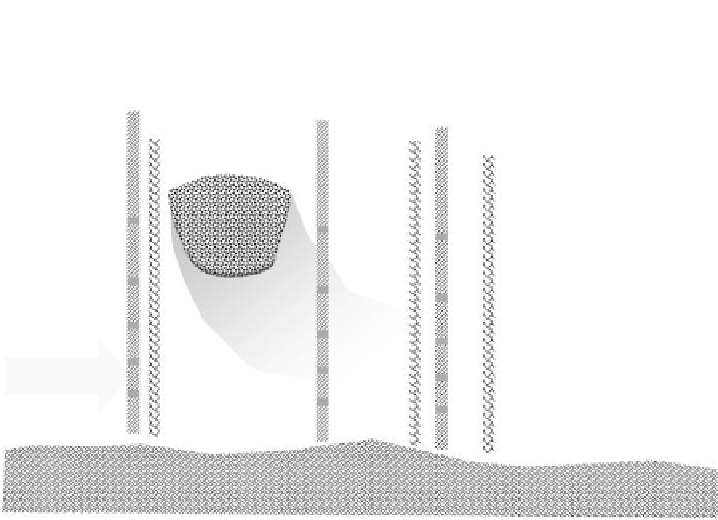Environmental Engineering Reference
In-Depth Information
Multilevel soil
sampling
Contaminant source
Nest of monitoring
and sampling
wells
Groundwater
flow
Bedrock
FIGURE 3.8
Simple monitoring and sampling scheme for evaluating groundwater quality. (From Yong, R.N. and Mulligan,
C.N.,
Natural Attenuation of Contaminants in Soils
, CRC Press, Boca Raton, 310 pp., 2004.)
the concentration, composition, and toxicity of the target contaminant. For prediction of
further or continued attenuation of the target contaminant, the partition coeficients and
solubilities of the various contaminants are needed as input to transport and fate mod-
els. If biotransformation of the target contaminants has occurred, supporting laboratory
research would be needed to determine the likely fate of the transformed or intermediate
products.
3.3.2.1 Remote Sensing
Most of the existing technologies for monitoring algae and cyanobacteria rely on micro-
scopic techniques that are laborious and highly variable. Recently, algae and algal blooms
can be detected using satellite imaging systems and spectroluorimetry (Gitelson and
Yacobi, 1995). Millie et al. (2002) have demonstrated that absorbance and luorescence spec-
tra can be used to discriminate microalgae. This method can potentially be applied as part
of in situ monitoring program.
Remote sensing by Landsat satellites has been evaluated by Zhu et al. (2002) for the
Pearl River in South China, Hong Kong, and Macau region and by Han and Jordan in the
United States (2005). Sea color was monitored, and the images were analyzed by an algo-
rithm of
gradient transition
. In situ optical, chemical and biochemical measurements for
chlorophyll-a and phytoplankton and other parameters correlated well with ocean color.
Han and Jordan (2005) found that the irst derivative spectra and the best wavelengths
could correlate well for determining the chlorophyll content of bioilms.

































Search WWH ::

Custom Search